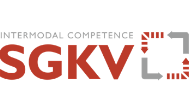













"COMBINE is pursuing a comprehensive transport service approach to strengthen these transport sections. This initially contains an overview of the CT market, its goods flows and the handling technologies used, in order to find starting points for strengthening CT. Building on this, the project aims primarily at the optimisation of CT terminal operations, which in turn includes benchmarking of existing CT handling technologies and the introduction of new technologies to increase efficiency. Recommendations for targeted promotion of CT in the Baltic Sea region and a guideline for the design of CT transport chains round off the project.
The tasks of the SGKV include not only the development of a definition of combined transport adapted for the Baltic Sea region, but above all the analysis of the CT market with regard to regional flows of goods and local transport organisation. The latter primarily with regard to the transhipment technologies and equipment used, loading units and the goods transported. "
The main objective of the COMBINE project is to increase the share of combined transport (KV) in the Baltic Sea region (OSR) and thus to make transport more efficient and environmentally friendly. The main challenge here is the efficient and competitive combination of the modes of transport train, (inland) ship and truck - which entails additional work when handling the goods. This has to be compensated by lower transport costs in the main leg as well as on the “last mile” of the transport route. In general, the longer the main run and the shorter the last mile, the more competitive the CT. Due to the spatially dispersed traffic and the tradition of road transport, the CT share in the OSR is still low. COMBINE aims to change this situation by improving the operation at nodes and lowering the costs of the last mile through the introduction of innovative technologies.